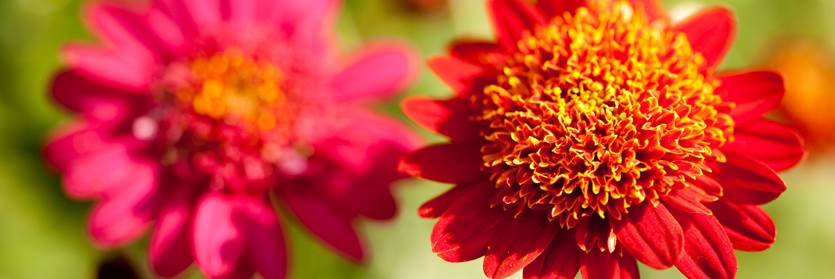Inside The New York Botanical Garden
horticulture
Posted in Adult Education on December 30 2013, by Lansing Moore
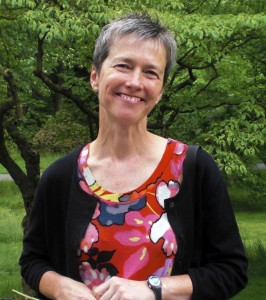 It’s not only the born-and-raised green thumbs who find their way into professional horticulture. Among some of our Horticulture Certificate program’s accomplished alumni you’ll find horticulturists and landscape designers who started their careers in very different fields, and Amy Henderson, who spent much of her working life designing without a trowel at her side, is just such a person. We recently caught up with Amy to get her take on entering a Horticulture Certificate program, working in garden design, and more.
It’s not only the born-and-raised green thumbs who find their way into professional horticulture. Among some of our Horticulture Certificate program’s accomplished alumni you’ll find horticulturists and landscape designers who started their careers in very different fields, and Amy Henderson, who spent much of her working life designing without a trowel at her side, is just such a person. We recently caught up with Amy to get her take on entering a Horticulture Certificate program, working in garden design, and more.
What drew you to the NYBG Horticulture Certificate Program?
Around 2009 I started visiting the Garden frequently and treated myself to a few Gardening classes. I was looking for a change from my decades of work in graphic design, and it dawned on me that I could use my design skills with a new, living medium—plants—and that maybe the Horticulture certificate could lay the foundation of a path to a new career. I settled on the Garden Design Horticulture track because to me, the plants are what it’s all about.
Read More
Posted in Adult Education on December 26 2013, by Lansing Moore
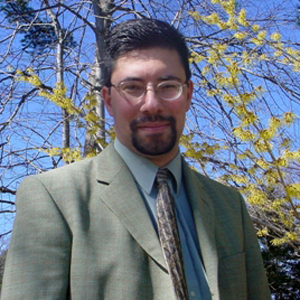 Vincent Simeone is a well-respected horticulturist who teaches a number of plant-related courses in the Garden’s Horticulture Certificate program. He just released a new book, Grow More With Less: Sustainable Garden Methods (Cool Springs Press, December 2013), that offers the home gardener detailed and practical ways to create a sustainable home landscape with less work, less water, less money, and better results. Vincent graciously offered to share with us some tips from this valuable resource.
Vincent Simeone is a well-respected horticulturist who teaches a number of plant-related courses in the Garden’s Horticulture Certificate program. He just released a new book, Grow More With Less: Sustainable Garden Methods (Cool Springs Press, December 2013), that offers the home gardener detailed and practical ways to create a sustainable home landscape with less work, less water, less money, and better results. Vincent graciously offered to share with us some tips from this valuable resource.
Proper plant selection is very important. What will your book cover and is there one general tip you can share?
There is an entire chapter in the book dedicated to properly selecting the right plant for the right place and it encourages gardeners to think outside the box. This chapter offers some popular, tried and true favorites such as flowering dogwood and winterberry, along with some lesser-known species plants and new cultivars that extend seasonal interest and are low maintenance once established. The resurgence of native grasses such as Little Blue Stem and Switch Grass have raised the bar in the horticultural industry giving us many new possibilities that we didn’t necessarily have before. The key is to do your homework and purchase plants from a reputable plant source.
Read More
Posted in Around the Garden, Photography on June 21 2013, by Matt Newman
These great Instagram shots were snapped a while back by our friend Rafi, one of our Horticulture staffers, and they’re a solid reminder to everyone out there clicking away in the Garden that we’d love to see your stuff. Whether you’re submitting atmospheric DSLR shots to our NYBG Flickr group, or tweeting us your Instagrams, never be afraid to show us your perspective!
[Not a valid template]
Posted in Adult Education on June 4 2013, by Lansing Moore
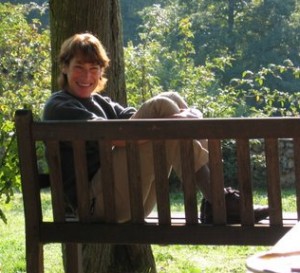 This month we feature Elaine Yellen, a Westchester-based landscape designer and NYBG graduate who now runs her own firm in Scarsdale, where she continues to build upon her Garden education.
This month we feature Elaine Yellen, a Westchester-based landscape designer and NYBG graduate who now runs her own firm in Scarsdale, where she continues to build upon her Garden education.
“I completed the Horticulture Program and the Landscape Design Program,” Elaine said. “Both provided essential preparation that let me feel like a true professional when I presented myself to clients as an expert in my field. Many of my teachers were working professionals and were so helpful in all aspects of project design and implementation. They were always very generous with advice to a budding designer.”
Elaine first came to the NYBG because she wanted to turn her love of gardening into a profession: “It was my creative outlet… so I decided to study it formally and see where that would lead.” In addition to many residential projects in lower Westchester, local golfers might be familiar with her work for clubs and courses such as Winged Foot, Brae Burn, Fenway, Sunningdale, Fairview, and Scarsdale.
Read More
Posted in Around the Garden on February 20 2013, by Lisa Vargues
Lisa Vargues is a Curatorial Assistant with the NYBG’s Steere Herbarium.
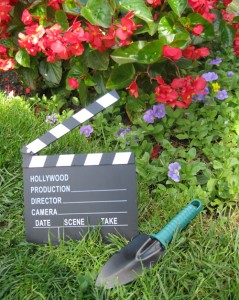 As springtime quietly lingers around the corner, the 85th Academy Awards ceremony also draws near. While we wait for both the red carpet and springtime flowers to unfurl, this is an ideal opportunity to consider some garden-focused movies, as well as the connection between horticulture and film-making.
As springtime quietly lingers around the corner, the 85th Academy Awards ceremony also draws near. While we wait for both the red carpet and springtime flowers to unfurl, this is an ideal opportunity to consider some garden-focused movies, as well as the connection between horticulture and film-making.
Have you ever found yourself watching films with a “botanical eye,” ogling the scenery; zeroing in on flowers in the set; or perhaps debating the name of a plant in a fleeting scene? Presumably, many garden enthusiasts have this inclination. Whether we are conscious of it or not, greenery (simple or grand-scale) is frequently an essential ingredient in shaping the atmosphere of film scenes.
Credit for the green on the silver screen often goes to the Greensman (a.k.a. the Greensperson), depending on the production arrangement. Working with the Art Department as a type of set dresser, this is the professional who typically locates, arranges, and maintains the necessary foliage and flowers (real and artificial), as well as other landscaping elements, for film sets. If a large amount of greenery is needed for a film, a greens team is utilized, as in Peter Jackson’s Lord of the Rings trilogy, which included a Greensmaster for its elaborate, naturalistic scenery.
Read More
Posted in Around the Garden, Science on May 1 2012, by Matthew Pace
Matthew Pace, an expert with the NYBG through 2011, is currently pursuing a Ph.D. in botany at the University of Wisconsin.
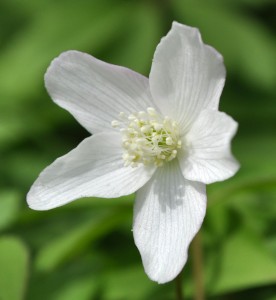 The next time you’re outdoors, take a moment and look around. What plants do you see growing nearby? Have those species always been there? Might there be plants that once grew in that area but are no longer found there? How can we help to protect the plants that we find in a given area? These are questions that many botanists and horticulturalists think about and strive to understand every day. They are central to the issues of conservation and restoration–issues which are also central to the mission of The New York Botanical Garden.
The next time you’re outdoors, take a moment and look around. What plants do you see growing nearby? Have those species always been there? Might there be plants that once grew in that area but are no longer found there? How can we help to protect the plants that we find in a given area? These are questions that many botanists and horticulturalists think about and strive to understand every day. They are central to the issues of conservation and restoration–issues which are also central to the mission of The New York Botanical Garden.
A real-world example of these issues is the case of Anemone quinquefolia and the NYBG. Based on founder Nathaniel Lord Britton’s first list of species originally found on NYBG grounds; field work in the Forest; and herbarium work I had conducted (looking through hundreds of dried plant specimens of species found in the NYC metro-area), I thought Anemone quinquefolia was just one of the 100+ native plant species which have been extirpated since the founding of the Garden (“extirpated” is a word which describes species which were once found in a location, but are no longer found there, a.k.a. local extinction). The last herbarium collections of Anemone quinquefolia were from 1898. Little did I know that I was in for the surprise of the year!
Read More
Posted in Around the Garden on November 10 2011, by Matt Newman
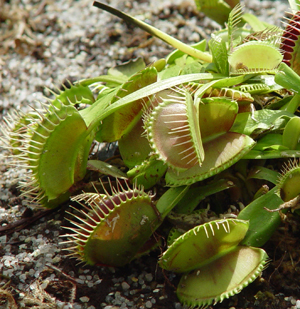 While walking through the Enid A. Haupt Conservatory this afternoon, I found myself taken with a little plant–squat, a bit ragged, and looking almost sinister for its petite size. The nostalgia, however, was too much to gloss over.
While walking through the Enid A. Haupt Conservatory this afternoon, I found myself taken with a little plant–squat, a bit ragged, and looking almost sinister for its petite size. The nostalgia, however, was too much to gloss over.
For most kids, horticulture isn’t a hobby fallen into casually. It’s more often a topic reserved for the science classroom, where frustrated 6th grade teachers scrap and claw to gain even the most tentative hold on their students’ attention. And past the Bunsen burners, wedged somewhere in between lessons on cell walls and chlorophyll, there sits the smallest concession to fun: Dionaea muscipula–the Venus flytrap.
Read More
Posted in Learning Experiences, People on July 21 2009, by Plant Talk
 |
Ashley Burke is a second-year student in the School of Professional Horticulture. She is doing her required six-month internship at the High Line in Manhattan, a recently completed elevated public park built on a former rail bed. The School’s internship program is designed to allow students to synthesize and apply what they’ve learned, expand their skills by providing further training in a professional horticulture venue, and expose them to the multiple facets of the field. Ashley sent us this report. |
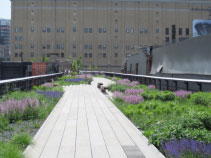 Interning at the High Line, a park on the Lower Westside of Manhattan that opened on June 9, has given me an unparalleled opportunity to observe and learn about how a city park is created.
Interning at the High Line, a park on the Lower Westside of Manhattan that opened on June 9, has given me an unparalleled opportunity to observe and learn about how a city park is created.
I began working at the park in mid-April and as such, have been exposed to various elements of the process. Some of my responsibilities have included compiling a master plant list; verifying what has been planted; creating plant identification cards to be used by the public, with plant names, cultural information, native range, and where it is located in the park; and even selecting horticulture tools. Of course, I also had hands-on plant work: The week before opening, we raced against time to weed, water, and prune to get the park ready for visitors.
I also worked extensively with the plans that were drawn up by the landscape architects, field operations, and the landscape designer, Piet Oudolf (who co-designed the current Seasonal Walk at The New York Botanical Garden), and this has allowed me to familiarize myself with the plants being used. Part of this has been to check that each plant species is properly identified, the name is spelled correctly, and that the plants are located where they are indicated on the plan. Through my experiences, I am learning that one cannot design properly without being able to identify the materials one works with.
Read More
 It’s not only the born-and-raised green thumbs who find their way into professional horticulture. Among some of our Horticulture Certificate program’s accomplished alumni you’ll find horticulturists and landscape designers who started their careers in very different fields, and Amy Henderson, who spent much of her working life designing without a trowel at her side, is just such a person. We recently caught up with Amy to get her take on entering a Horticulture Certificate program, working in garden design, and more.
It’s not only the born-and-raised green thumbs who find their way into professional horticulture. Among some of our Horticulture Certificate program’s accomplished alumni you’ll find horticulturists and landscape designers who started their careers in very different fields, and Amy Henderson, who spent much of her working life designing without a trowel at her side, is just such a person. We recently caught up with Amy to get her take on entering a Horticulture Certificate program, working in garden design, and more.